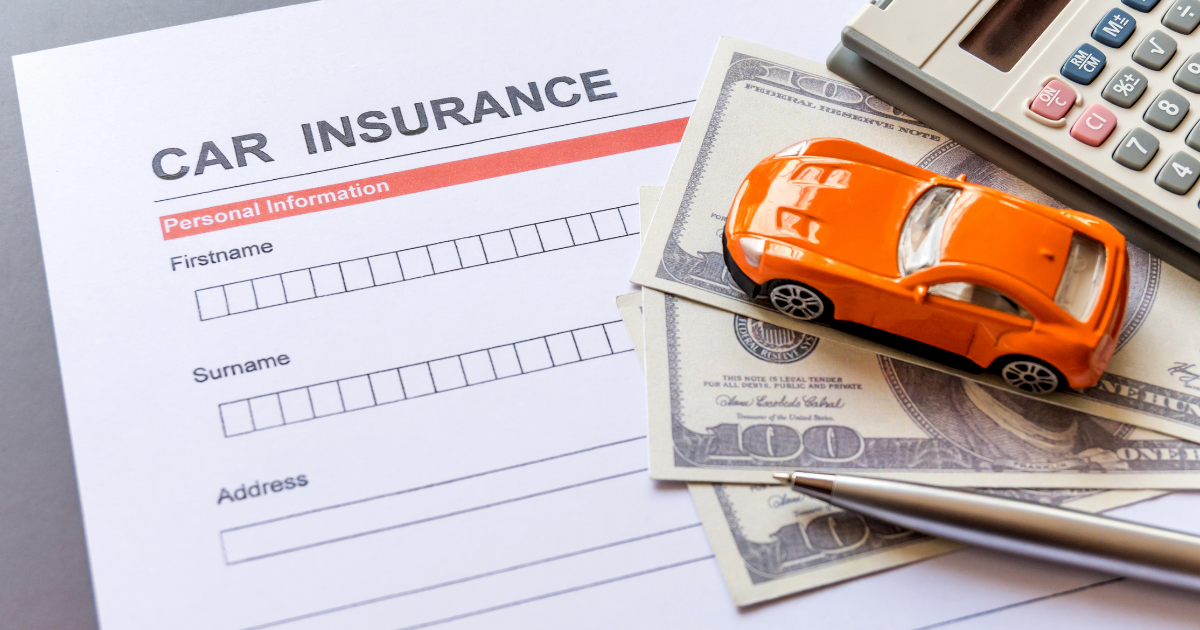Car owners nationwide are encountering significant spikes in their car insurance renewal notices, prompting a universal question: “Why is my car insurance so high?” In this comprehensive blog post, we will delve into the multifaceted reasons behind the surge in car insurance costs and provide valuable insights on how drivers can navigate this landscape to uncover more affordable options.
Personal and Social Factors Influencing Car Insurance Rates

Location Matters:
Living in certain states may require higher insurance coverage, impacting costs. Severe weather, crime rates, and the rural-urban divide also contribute to variations in insurance premiums.
Age, Gender, and Marital Status:
Factors beyond your control, such as age and gender, play a role in determining insurance rates. Additionally, marital status can affect premium costs, with married individuals often enjoying lower rates.
Education, Occupation, and Credit History:
Auto insurance companies may consider your level of education and occupation, linking them to perceived risk. Credit history is another crucial factor, influencing rates based on credit-based insurance scores.
Home Ownership and Driving Skills:
Homeownership typically leads to lower insurance costs, and bundling policies can secure discounts. The number of drivers and vehicles, driving experience, and annual mileage are also impactful.
Driving Record:
Maintaining a clean driving record is vital. Speeding tickets and accidents can significantly raise premiums, with DUI convictions causing the most substantial hikes.
Choice of Vehicle and Safety Considerations

Car Make and Model:
The type of car you drive, along with its repair costs and safety features, directly affects insurance rates. Some cars, like the Honda CR-V, are cheaper to insure than others, such as the Tesla Model S Performance.
Financing and Leasing:
Leasing a car generally results in higher insurance costs due to the leasing company’s vested interest. Financing a car is more cost-effective, but lenders often mandate comprehensive coverage.
Garage Parking and Theft/Crime Rates:
Parking in a garage may earn you a “garage discount.” Local crime rates, especially thefts and vandalism, impact insurance costs.
Safety Features and Trim Levels:
While safety features can reduce accidents, they often incur higher repair costs, influencing insurance rates.
Choice of Car Insurance Company
Current and Previous Insurer:
Shopping around is crucial for finding competitive rates. Past claims history and loyalty to a specific insurer can also impact current rates.
Insurance Lapse:
A lapse in coverage, intentional or not, raises rates by 25%, highlighting the importance of maintaining continuous coverage.
Coverage Selection and Deductibles:
The type of coverage and deductible choices directly influence insurance costs. While higher deductibles may lower premiums, careful consideration is essential.
Loyalty and Discounts:
Blind loyalty can result in higher costs. Loss of discounts, such as for a new car or good driving record, can contribute to rising premiums.
Societal Trends Contributing to Expensive Car Insurance
Post-Pandemic Driving Habits:
Increased driving post-pandemic leads to more accidents, impacting insurance rates.
Inflation:
Inflation’s ripple effect on vehicle repair costs contributes to rising insurance rates.
Climate Change:
Climate-related disasters lead to more claims, prompting insurers to raise premiums.
Rise of Electric Vehicles:
While EVs are eco-friendly, they can be more expensive to insure due to higher repair costs.
Increase in Vehicle Thefts and Parts Theft:
Rising crime rates, especially catalytic converter thefts, contribute to higher insurance costs.
Broken Supply Chains and Shortages:
Supply chain disruptions during the pandemic increase parts prices, raising the cost of repairing vehicles.
Slower Claims Processing:
Delayed claims processing affects customer satisfaction and can indirectly impact insurance rates.
How to Reduce Car Insurance Costs?
Choose the Right Car:
Research insurance costs for potential vehicle purchases to make informed decisions.
Driving Courses and Safe Driving:
Enroll in defensive driving courses to secure discounts and maintain a clean driving record.
Maintain a Good Credit Score:
In states where credit is considered, a good credit score can lead to lower insurance costs.
Compare Multiple Quotes:
Regularly shop around for the best rates, as each insurer has its unique formula for setting rates.
Choose the Right Coverage and Deductible:
Balancing coverage needs and deductible choices can optimize costs.
Bundle Auto and Home Insurance:
Explore bundling options for potential discounts, but compare rates to ensure optimal savings.
Low-Mileage Rates and Pay-Per-Mile Programs:
Explore discounts for low-mileage drivers and consider pay-per-mile insurance programs.
Read Also:
Is Long-Term Care Insurance Worth It?
Conclusion:
Understanding the myriad factors impacting car insurance costs is essential for every driver. By implementing these strategies and staying proactive in managing various aspects of their driver profile, individuals can take meaningful steps to reduce car insurance costs. In a landscape of evolving trends and external factors, staying informed and adaptable is key to securing affordable and comprehensive coverage.



